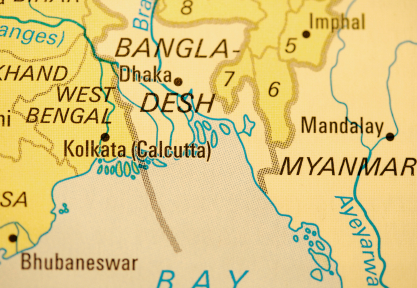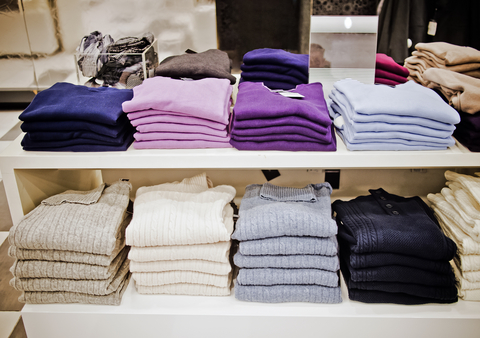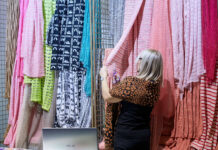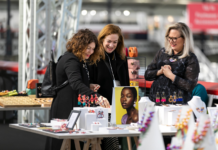Jana Bukolovska reports
Eight of the most influential business leaders in the UK have joined together to spearhead industry action to drive out slavery from supply chains.
The group who represent some of the largest companies in the UK – who collectively employ over 800,000 people and have a combined turnover of more than £140 billion a year – united as the founding members of the Business Against Slavery forum, which launched last week in partnership with the UK government.
The eight founding members are: Mark Cutifani, Anglo American CEO; Jeremy Darroch, SKY CEO; Stuart Gulliver, HSBC CEO; Marco Gobbetti, Burberry CEO Gavin Patterson, BT CEO; Sir Martin Sorrell, WPP CEO; Jes Staley, Barclays CEO; and George Weston, ABF CEO.
Transparency in supply chain
Following the world-leading Modern Slavery Act 2015, the forum will build on work already underway by large firms to publish annual Transparency in Supply Chain Statements to demonstrate the action they are taking to ensure slave labour plays no part in producing their good or services.
“I am pleased that the Home Secretary and business leaders are coming together to discuss what more we can do to tackle the abomination of modern slavery,” said Home Office non-executive director John Studzinski CBE. “We must be innovative; showing that ethical profit is possible. And I am convinced that companies will reap benefits from doing the right thing.”
Despite progress made by businesses in stamping out global slavery, forced labour still generates US$ 150 billion in illicit profits every year, according to the Home Office.
Forced labour in textiles industry
The apparel industry has seen the most exposure in relation to its connection with human rights violation. There are currently thousands of textile businesses globally, from spinning mills to garment manufacturers, that come under great pressure to both reduce costs and produce high volume products in response to the high, ever-changing consumer demand. This, in turn, creates high pressure on textiles industry workers with regard to their wages and overtime work requirements.
In countries like India, Bangladesh, China, Thailand, Pakistan and Uzbekistan, systemic pressures, lack of education and legal protection, and high poverty rates lead to common violations of the basic human rights of workers, who are primarily children, adolescents and women coming from rural and deprived urban areas, dependent upon the success of the industry to survive.
One of the biggest problems in tackling forced labour in the textiles and apparel industry is the complex supply chain. The industry relies on migrant labour, labour outsourcing, and a large amount of subcontracting, providing fertile ground for exploitation. “Companies that sell their products in Europe and the US have no clue where the textiles come from. Maybe they know their first supplier and there are codes of conduct in place, but further down the chain in the lower tiers it is very difficult to understand where the cotton comes from,” said Sofie Ovaa, global campaign coordinator of Stop Child Labour.
The International Labour Organisation (ILO) estimates that globally 152 million children are engaged in child labour, which is forbidden by law in most countries. Many of these child labourers work within the fashion supply chain, making the textiles and garments for markets in Europe, the US, and beyond.
Cotton picking in Uzbekistan
According to the US State Department, cotton is one of the goods most commonly produced using forced and child labour In Uzbekistan. At the end of last year, the European Parliament backed a textile trade deal with Uzbekistan opposed by anti-slavery activists who say it will result in the EU profiting from forced labour in the Central Asian country’s cotton industry.
According to the Cotton Campaign, the Uzbek and Turkmen governments force farmers to grow cotton and citizens to pick cotton, all under threat of penalty, including the loss of land, job loss, expulsion from school, and docked pay. In Uzbekistan, more than a million school teachers, doctors, nurses and other citizens are victims of forced labour each year.
Since 2007, the Cotton Campaign has advocated with governments, companies and investors to use their leverage to end this continuous and systematic human rights violation. As a result of its advocacy, over 200 brand-name retailers have committed to avoid Uzbek cotton until forced labour of children and adults has ended, and several companies have committed to avoid Turkmen cotton while it is produced by state-led forced labour.
Bonded labour in India
The Indian state of Tamil Nadu is the largest cotton yarn producer in the country and a major hub in the global textile and knitwear industry. Around 30% of the country’s cotton yarn is used in local factories that produce for brands like C&A, H&M, Marks and Spencer, Primark, Walmart, and Zara.
The workforce in this industry is highly vulnerable, often made up of young girls, who are lured to work in a spinning mill with a promise of accommodation and a lump sum, which can be used for their dowry. In practice, this lump sum is made up of withheld wages, and used as a means to bind workers to the mill. Known as a Sumangali scheme, this practice of bonded labour was found in 351 out of 743 mills in Tamil Nadu in 2016, according to a report by India Committee of the Netherlands (ICN).
These girls, who are younger than 18, are taken away from their families and their homes, put into hostels and are forced to work under exploitative and unhealthy conditions to fulfil the contract. According to a Freedom Fund report, commissioned by the C&A foundation, cases of physical abuse and sexual harassment, as well as threats, were documented in some mills practising this bonded labour scheme. In 392 out of 743 mills freedom of movement was restricted, according to the ICN.

According to a report by the Centre for Research on Multinational Corporations (SOMO) and the ICN, in the past few years, brands and retailers sourcing from Tamil Nadu have started to step up audits at the level of end-manufacturing units. However, only a small number of brands and retailers have started mapping and to some extent auditing their second-tier suppliers.
Slave like conditions in Brazil
Another country relying heavily on migrant labour in the textiles and apparel industry is Brazil, Latin America’s largest economy. In November last year, Brazilian high street brand M. Officer was fined US$ 2 million by the country’s Labour Ministry for failing to monitor outsourced workshops in which Bolivians were found working in degrading, slave-like conditions. Other labels found to have similar problems in their supply chains in the past were Marisa, Pernambucanas, Renner, Les Lis Blanc, and Zara.
There are 300,000 Bolivians in Sao Paulo, 90% of them, according to the Labour Ministry, work in the textiles industry. In the past couple of years, there have been numerous incidents of police rescuing groups of Bolivians, both adults and children, living in slave-like conditions and forced to work in clandestine textile sweatshops in São Paulo, highlighting Brazil’s status as a major forced labour destination.
Lowest salaries in the world
The textiles industry is also the driving force behind economic growth in Bangladesh, where the garment sector employs more than four million people to fulfil the demand for fast fashion. This growth is fuelled by the cheap labour, with workers earning some of the lowest salaries anywhere in the world.
A major study released by the Overseas Development Institute at the end of last year, found that 15% of six- to 14-year-olds living in poorest households work an average of 64 hours a week in Bangladesh, many in supply chains connected to the world’s most popular brands. “Widespread sub-contracting renders it highly probable that children are producing clothing destined for international supply chains,” the report says.
“The vast majority of these children will be working in factories that provide limited protection. Two factory programmes – the Accord and Alliance programmes – have been established by foreign brands. However, they cover only around one quarter of Bangladesh’s garment factories.”
Further reading
Child labour in the fashion supply chain
Fabric of Slavery: Large-scale forced (child) labour in South India’s spinning mills

Subscribe To Our Newsletter
Join our mailing list to receive the latest news and updates from our team.














